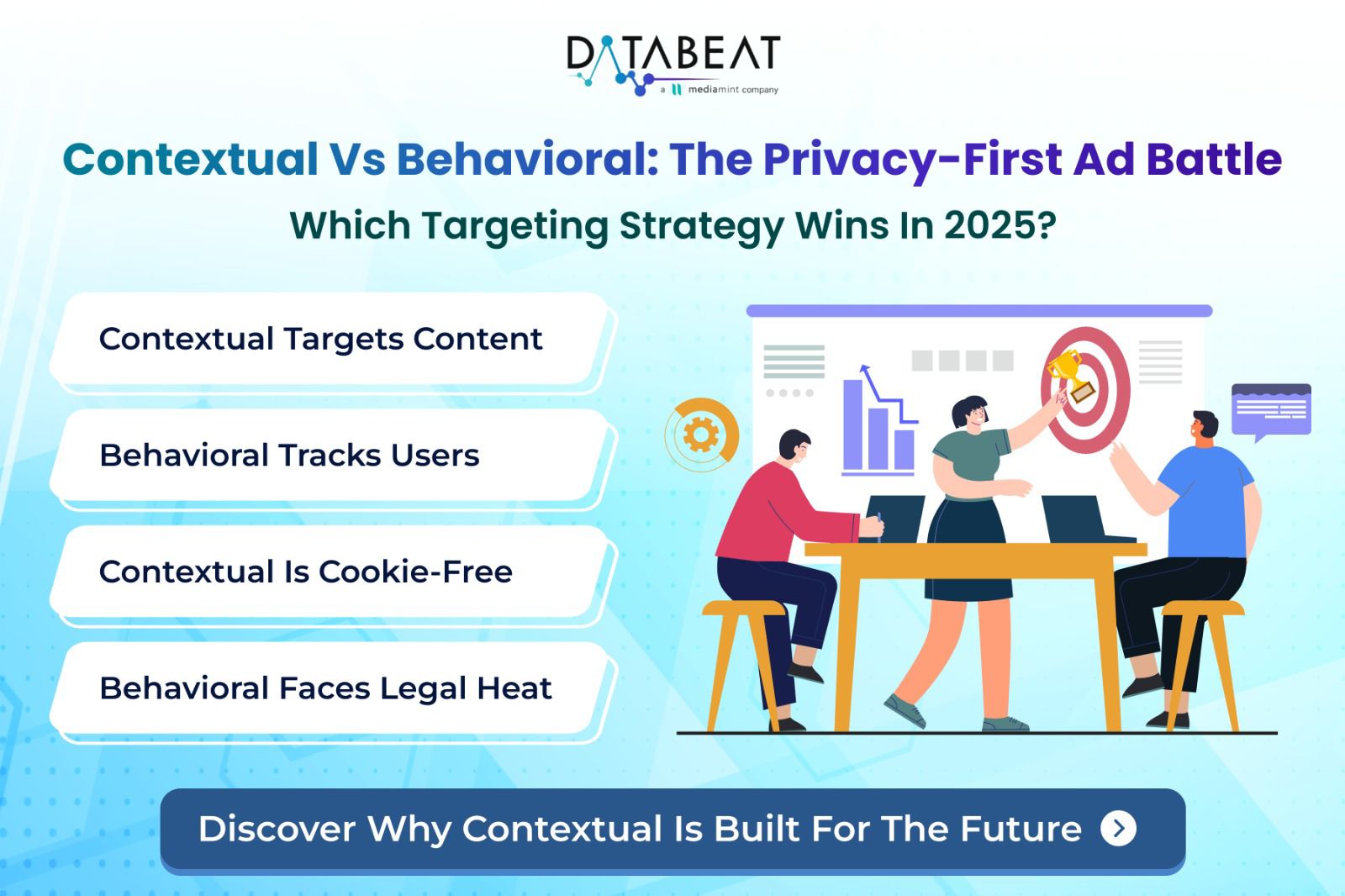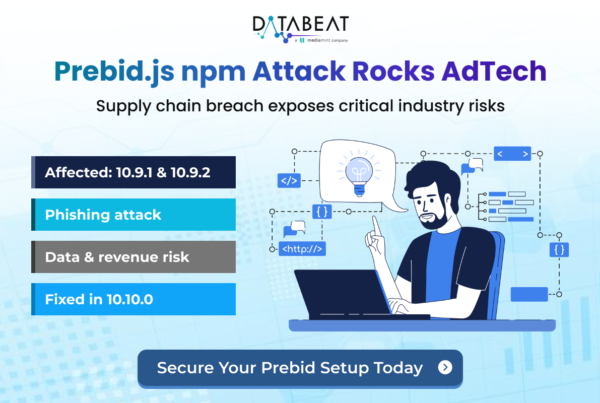
What is Contextual Advertising?
Contextual advertising is a digital ad approach that shows ads based on what a webpage says, not on where a visitor has been or on any private profile. Picture an article about preparing for a marathon with a small banner for lightweight running shoes; the message simply matches the page instead of stalking the reader.
Because it skips cookies and personal tracking, this style lines up headlines, themes, and keywords, letting the sponsor speak only to visitors who might care right then. As a result, the appearance feels natural and relevant even when the publisher knows almost nothing about who clicks.
Advantages of Contextual Advertising
- Privacy-Friendly: It lines up with rules like GDPR and CCPA as it runs without cookies or personal files.
- Relevance Without Intrusion: Ads appear alongside the page topic instead of tracking history, leaving users far less uneasy.
- Brand Safety: Most platforms let brands block sensitive categories and unwanted domains.
- Cost-Effective: Campaigns can pacing well with simple keyword targeting, so advertisers and brands spend less on elaborate tracking tech.
- High Intent Audiences: Trafficked campaign based on audience interest.
Behavioral Advertising: A Two-Faced Sword
Behavioral advertising is the more old-fashioned, data-based sibling of contextual advertising. It’s based on monitoring users’ internet activity—like browsing history, search terms, previous buys, and clicks—to deliver highly targeted advertisements to websites. For example, if an individual looks for hiking boots on a particular website, they might end up seeing hiking equipment advertisements days afterward on totally irrelevant sites. This technique seeks in-depth personalization but has raised concerns regarding privacy.
Strengths of Behavioral Advertising
- Extremely Personalized: Users view advertisements relevant to their interests and browsing behavior.
- Better Conversion Rates: Personalized advertisements tend to achieve greater engagement and sales.
- Cross-Platform Targeting: Monitors user behavior across devices and websites.
Challenges and Future of Behavioral Advertising
- Regulatory Pressure: As regulations become more stringent (e.g., GDPR, CCPA), the targeting of ads with personal data comes under increased scrutiny.
- Third-Party Cookie Phase-Out : With the phasing out of cookies by major browsers, behavioral advertising is facing technical disruption.
- User Backlash: Numerous users currently see behavioral advertising as intrusive or “creepy,” lowering confidence in brands.
- Evolving Toward Consent-Based Models: The future of behavioral advertising hinges on transparency, first-party data, and opt-in models.
Emerging Trends
- More dependence on first-party data (directly collected by brands)
- Utilization of AI for anticipating user intent with less intrusive data
- Emphasis on consent management and ethical personalization
What is the Difference Between Contextual and Behavioral Advertising?
Both try to put the right message in front of the right eyes, yet the way they choose those eyes could not be more distinct.
|
Feature |
Contextual Advertising |
Behavioral Advertising |
| Basis for Targeting | Webpage content (topics, keywords) | User behavior (browsing history, clicks, past visits) |
| Data Dependency | Does not require user data or cookies | Relies heavily on personal/user data |
| Privacy Compliance | High – aligns with privacy regulations | Increasingly scrutinized under data laws |
| Real-Time Relevance | Based on current page being viewed | Based on past behavior, not always aligned with intent |
| Brand Perception | Seen as less invasive | Often seen as intrusive or creepy |
How Does Contextual Advertising Work?
The process of contextual targeting is straightforward and tech-driven. Here’s how it typically unfolds:
-
Choose Parameters for Contextual Targeting
Advertisers define targeting criteria, such as:
- Keywords (e.g., “Mental Health,” “Fitness”)
- Topics/Categories (e.g., health & wellness)
- Language & location
- Negative keywords to exclude irrelevant or unsafe content
-
Google (or other ad networks) Analyzes the Page
- While the ad platform is crawling and analyzing each webpage in-due-time in-terms-of text, images, structure, and metadata.
- Next, it will determine the page’s key topic, and match it with the ad targeting.
-
Your Ad is Served
If the content of the page is positive for the targeting your ad is served to users viewing that webpage but with no knowledge of who they are by the ad platform.
Future of Contextual Advertising
With the expansion of privacy regulation and no third-party cookies, contextual is having its moment again. Google’s Privacy Sandbox, Apple’s ATT (App Tracking Transparency), and similar initiatives have led advertisers to seek alternative non-intrusive methods.
- AI/machine learning will push contextual advertising forward too, for example:
- Improving natural language capabilities for understanding webpages.
- Understanding context in video/audio content.
- Improving real-time engagement of ads to surrounding content.
So, to sum it all up, contextual ads are becoming smarter and more scalable, making them future proof.
Why Contextual Advertising is Effective
- Engaged Audience: Ads are shown to people already based on their interest in the content
- Higher Click-Through Rates (CTR): Since it’s user-interest content so there are high chances to get clicks.
- No Reliance on Cookies: Makes it sustainable in a privacy-first world
- Lower Risk of Ad Fatigue: Because the content is changing constantly based on audience interest, so are the ad placements
Examples of Contextual Ads
- On a Sports blog: An ad for Gym clothes
- On a Travel Guide Website: Ads promoting travel insurance or discounted flights
- On a Tech News Article: Ads for the latest smartphone or cloud services
- On a Parenting Forum: Baby product ads or education services
Why This Matters for You
Contextual advertising isn’t just about respecting privacy-it’s about reaching the right people at the right moment. By placing ads alongside content your audience is already interested in, you’re not only building trust but also generating higher-quality leads that are more likely to convert.
At DataBeat, we help publishers and marketers put this into action-setting up contextual display and video campaigns, testing what works best, and fine-tuning strategies to turn attention into real business results.
Want to see how contextual ads can drive more qualified leads for you? Book a quick call with us here.









